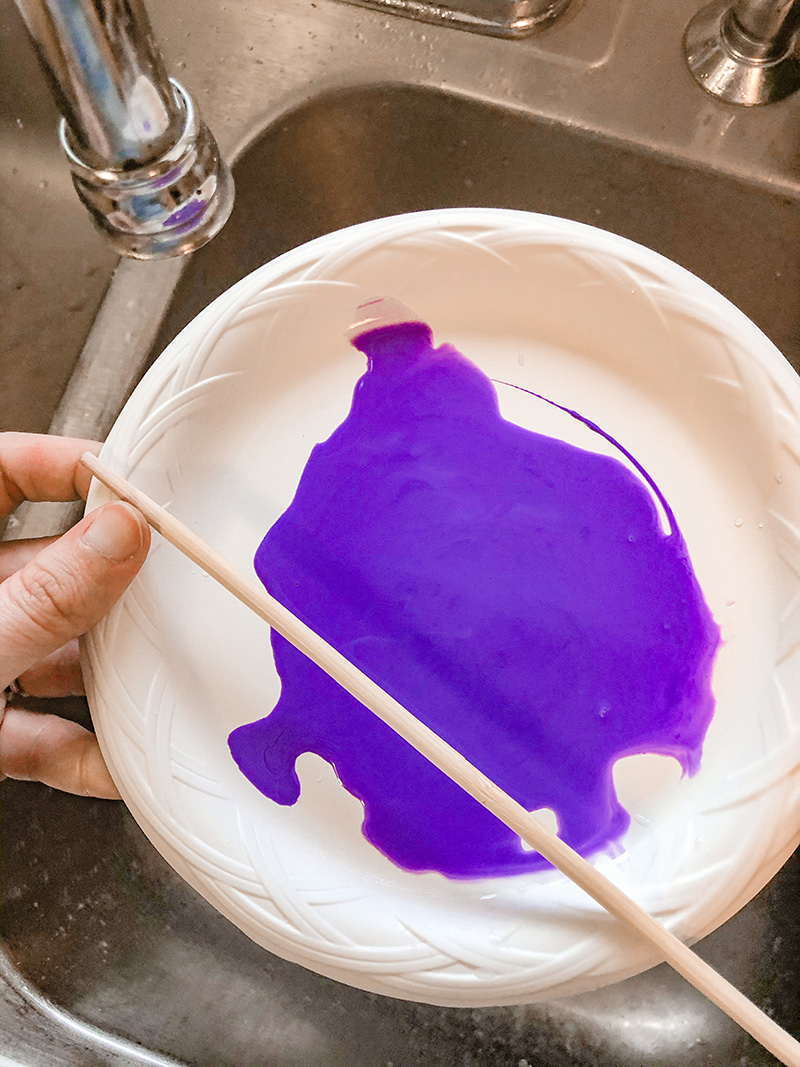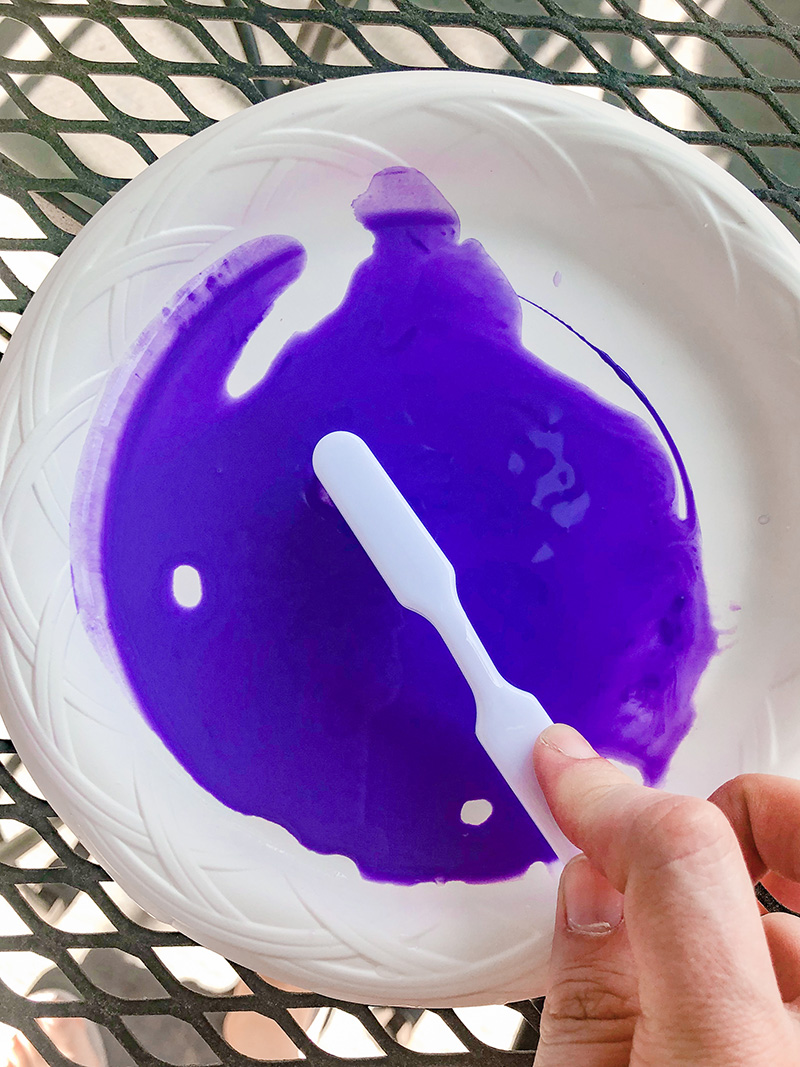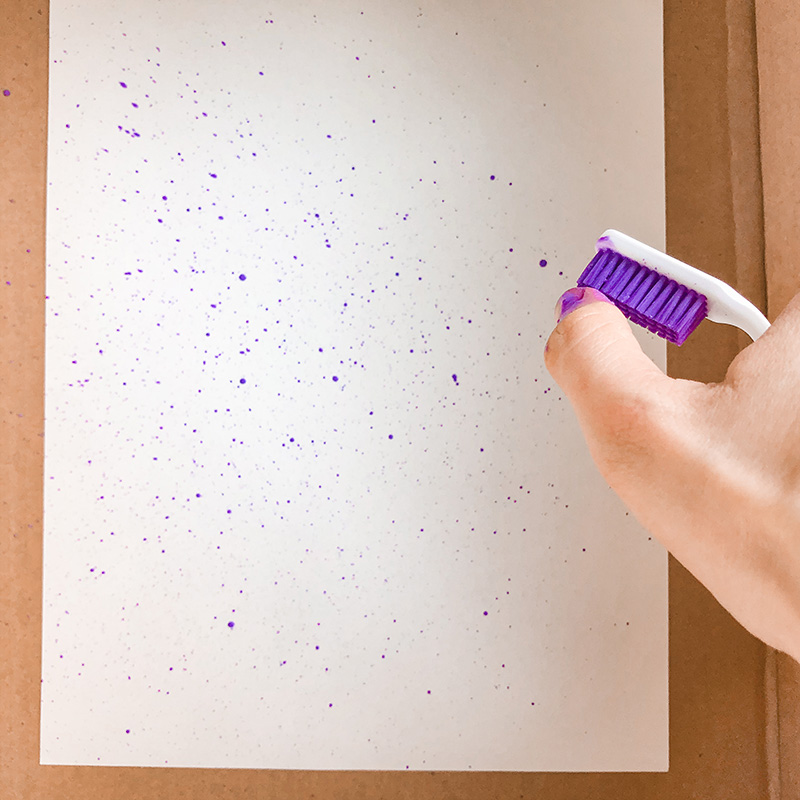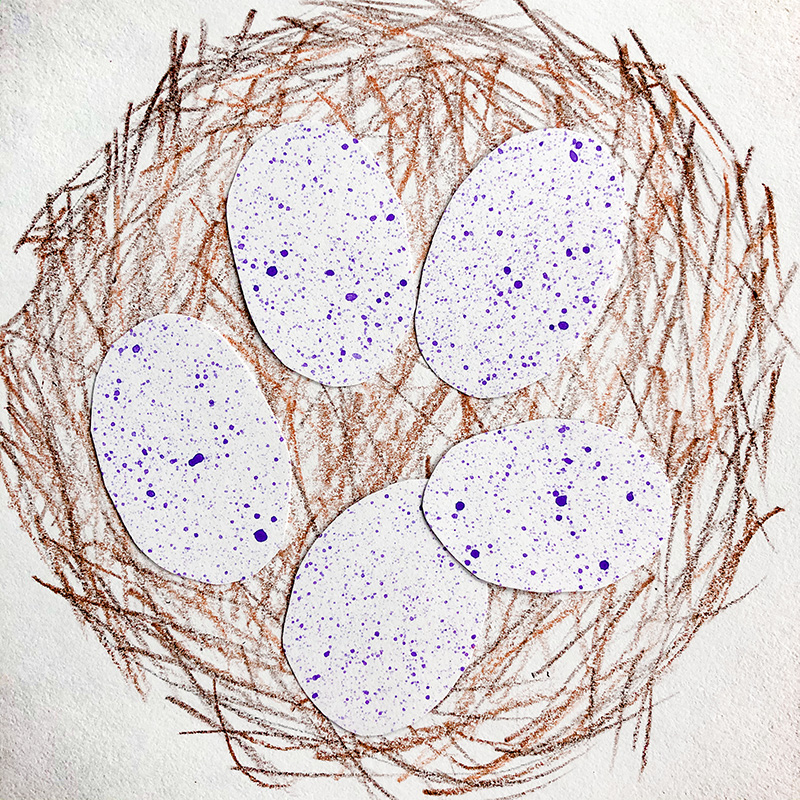#layer-duo-1134
Materials
- an old toothbrush
- some kind of paint – acrylic or tempera paint should work fine
- a tray or a plate with a lip
Instructions
- Find an old toothbrush and some kind of paint — acrylic or tempera paint should work fine. Just make sure you find a good workspace that you can protect from accidental splatters! Lay down some newspapers or, better yet, find a box or a big space outside you can work in.
- Depending on the thickness of your paint, you’ll probably want to water it down a little bit. If it’s already pretty watery, you might be able to skip this step. It should be similar to the consistency of milk — liquid, but not quite as thin as water. Pour a small layer of your paint into a tray or plate with a lip and mix it up with a toothbrush or chopstick. Tip: Don’t add too much water right away! You can always add more if you need to.
- Now dip your toothbrush bristles into the paint. Position your brush an inch or two above the paper. Where do you think the paint will go? Use your thumb to flick the paint onto your paper. The paint doesn’t always end up where you think it will! Notice how the angle of your brush affects where the paint lands.
- Once your painting is dry, you can use it for anything. You could cut out eggs for a bird’s nest collage, use it as a backdrop for an abstract painting, or fold it to make a colorful card. Show us your finished products and let us know how you used your speckled specimens!
Bonus
Try this out on a paper towel. How does the paint look different on each surface? Which material absorbs more of the paint, and what effect does that have? Artists in the CMA collection like Sam Gilliam and James Brooks experimented with letting paint soak into the surface of their works of art and trying new techniques like spattering or pouring.



